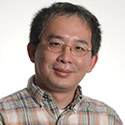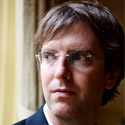Advisory Board and Editors Bioengineering

Barbara P Chan
Professor of Biomedical Engineering, Mechanical Engineering at The University of Hong Kong.

Albert Cheng
Albert Cheng obtained his BSc in Biochemistry and MPhil in Biology from Hong Kong University of Science and Technology in 2005 and 2007, respectively. He studied neurotrophin signaling and C. elegans developmental genetics. He then pursued his PhD in Computational & Systems Biology at MIT in the labs of Profs Christopher Burge and Rudolf Jaenisch and worked on various topics on epigenetics, gene regulation and alternative splicing in stem cells, reprogramming, cancer metastasis, erythropoiesis and differentiation. Cheng and colleagues identified H3K27ac as a signature for active enhancers. He analyzed alternative splicing in epithetlial-mesenchymal transition, cancer metastasis as well as erythropoiesis and identified splicing factors regulating these processes. He constructed CRISPR-on, an artificial RNA-guided activator based on CRISPR/Cas. After graduating in 2014, he joined the Jackson Laboratory at Bar Harbor, ME, as one of the first JAX scholars where he continued to work on understanding and improving the CRISPR/Cas technology. In July 2015, he started his own lab as an assistant professor at the Jackson Laboratory for Genomic Medicine campus at Farmington, CT.

Wei-Chun Chin
Associate Professor, Bioengineering, University of California, Merced.

Silvia Comani
I am Full Professor of Applied Physics, affiliated to the Department of Neuroscience, Imaging and Clinical Sciences, at the University “G. d’Annunzio” of Chieti – Pescara, Italy.
My research focuses on biomedical signal processing, mainly on development of methods for removal of artefacts from EEG signals recorded in adults and neonates, and of methods to study brain dynamics and inter-organ functional dynamics in adults and infants to detect the neural correlates of behavior in studies adopting a multimodal and multidisciplinary approach.

Vincent Courdavault
Associate Professor at the University of Tours, studying plant specialized metabolism with a particular emphasize on monoterpene indole alkaloids. I'm using transcriptomics, functional genomics tools to elucidate biosynthetic pathways. My resarch interests also include the transfert of plant pathways in heterologous organisms ubcluding the budding yeast.

Krystyna Dąbrowska
Affiliation: Institute of Immunology and Experimental Therapy, Polish Academy of Sciences, Wrocław, Poland (Bacteriophage Laboratory).Position: professor.
Current field of interest: non-bactericidal effects of phages in mammals; i.e. phage molecular biology tools for studies of phage impact on immunological system and other physiological aspects in mammals.

Richard Dortch
Richard Dortch, PhD, is an associate professor of imaging research in the Neuroimaging Innovation Center in the Department of Translational Neuroscience at Barrow Neurological Institute.
Dr. Dortch’s expertise includes radiological sciences and biomedical engineering. He is a member of the American Academy of Neurology and the International Society for Magnetic Resonance in Medicine.
Dr. Dortch earned his master’s and doctorate degrees in biomedical engineering from Vanderbilt University in Nashville, Tennessee. He completed a postdoctoral research fellowship in the Department of Radiology and Radiological Sciences at Vanderbilt University Medical Center, where he served as assistant professor before joining the faculty at Barrow in 2019. His research has been funded through the National Institutes of Health and the Department of Defense.
Dr. Dortch’s research interests include developing, optimizing, and validating quantitative MRI methods for neuroimaging applications beyond the brain. More specifically, Dr. Dortch focuses on developing MRI methods to overcome specific challenges of nerve and spinal cord imaging, translating these methods to clinical populations (e.g., to guide surgery, improve diagnostics, and serve as biomarkers of therapeutic response), and validating these methods in relevant preclinical models. He applies these methods to evaluate the pathological underpinnings (e.g., demyelination, axonal degeneration) of nerve and spinal cord trauma, peripheral neuropathies, and multiple sclerosis. Dr. Dortch was instrumental in Barrow gaining admission to the North American Imaging in MS Cooperative (NAIMS).

Tim L A Doyle
Dr Tim Doyle is a biomechanics and physical performance researcher at Macquarie University, Sydney, NSW, Australia. He has a broad network having studied within Australia (The University of Queensland, Edith Cowan University) and overseas at Ball State University in the USA. In addition to his academic qualifications he is also an accredited level 2 strength and conditioning coach (ASCA), an accredited level 2 sport scientist and exercise scientist (ESSA). He was awarded an Endeavour Executive Fellowship which provided the opportunity to spend time at The Mayo Clinic and Stanford University. His research involves neuromuscular biomechanics, injury prevention, and physical preparation in athletes and tactical populations.
Anja Ehrhardt
Anja Ehrhardt studied biology at the Universities Göttingen and Hamburg in Germany and performed her PhD thesis at the Fraunhofer Insitute of Toxicology and Aerosol Research in Germany. From 1999-2005 she was a postdoctoral fellow at Stanford University focusing on adenovirus and gene therapy. In 2005 she bacame a group leader at the LMU Munich, Germany, and since 2011 she is a full professor and chair of Medical Microbiology at the Private University Witten/Herdecke in Germany.

Drew Endy
Faculty of Bioengineering, Stanford University. Helped start BioBricks (biobricks.org) and iGEM (igem.org), and is a member of the US National Advisory Board for Biosecurity (biosecurityboard.gov).

Cristina Fillat
Since 2011 she leads a research group in Gene Therapy and Cancer at IDIBAPS, Barcelona. Over the years she has contributed to the gene therapy field with more than 80 publications. She was among the team members that promote the constitution of the Spanish Society of Gene and Cell Therapy and served as Scientific Secretary from 2005 to 2011. She is editorial board member of several journals and Associate Editor of the Current Gene Therapy.

Bernardo Franco
Dr. Franco has 20 years experience in academic research in microbiology, molecular biology, and biochemistry. Skills acquired during academic research include mainly nucleic acid manipulation, synthetic biology, bioinformatics, PCR, RT-PCR and qPCR, protein purification and characterization, light and confocal microscopy, flow cytometry and cell sorting, microbiological techniques (microorganism and cell culture, and collection management), good laboratory practices among others. He has eight years teaching experience in undergraduate and graduate programs (Signal transduction in bacteria and Molecular biology techniques, respectively).

